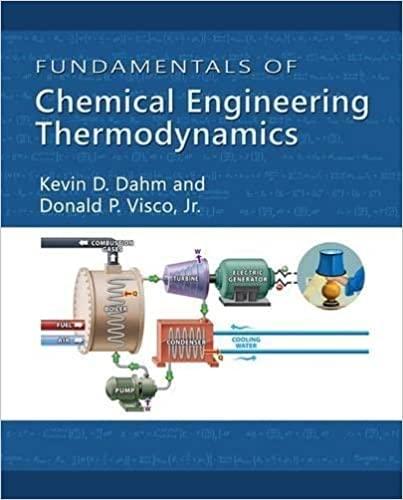Compare the results of Problems 4-9 and 4-10. A . Without the heat exchanger, the pair of
Question:
Compare the results of Problems 4-9 and 4-10.
A. Without the heat exchanger, the pair of turbines in Problem 4-10 would function identically to the turbine in Problem 4-9A. Comment on the effects the heat exchanger has on the process.
B. If the heat exchanger in Problem 4-10 was moved in front of the first turbine, and the two turbines were combined, the result would essentially be the process examined in Problem 4-9B. The process in Problem 4-9B looks simpler: the same heat is added, it’s just being added sooner, so any benefits you noted in part A of this problem are still obtained, and there’s no need for two separate turbines. Can you see any rationale for using the apparently more complicated process described in Problem 4-10?
Problem 4-9
Steam enters a turbine at 10 bar. The effluent pressure is 1 bar and the efficiency of the turbine is 80%. Determine the state of the turbine effluent (if pure liquid or vapor, find the temperature, and if a mixture, find the quality) and compute the work produced per kg of entering steam, when
A. The entering steam has T = 250°C.
B. The entering steam has T = 325°C.
Problem 4-10
A series of two turbines and a heat exchanger are used to obtain shaft work from steam in a steadystate process. The steam enters the first turbine at 10 bar and 250°C, and exits the turbine at 3 bar. In the heat exchanger, the steam is heated back up to 250°C, while the pressure remains 3 bar. This steam enters the second turbine in which it is expanded to 1 bar. Each turbine has an efficiency of 80%. For each kilogram of steam entering the process, find the amount of work produced in each turbine, and the amount of heat added in the heat exchanger
Step by Step Answer:

Fundamentals Of Chemical Engineering Thermodynamics
ISBN: 9781111580704
1st Edition
Authors: Kevin D. Dahm, Donald P. Visco





